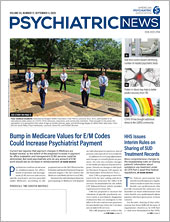As the number of COVID-19 cases continues to surge across the United States, the country is trying to keep its bearings and encourage individuals to play their own part in helping to eradicate the virus. In the midst of the fog of information drifting in day by day, it is grounding to look at what we know of the past to make sense of what is happening now. For the LGBTQ community, the realities of dealing with a virus that changes one’s life remain ever present. The story of a virus lingers in the memories of their past, and the struggles of how to manage it will persist into their future.
Trauma From AIDS Epidemic Reawakened for Many
Long before COVID-19 became a household name in the United States, another virus known as the human immunodeficiency virus (HIV) made a mark on the LGBTQ culture almost 40 years ago. The epidemic that ravaged the lives of the queer community, most of them being gay men, placed a permanent mark on their psyches. More than 700,000 people in the United States have died from HIV since the epidemic first began. Many of those in the LGBTQ community who are not HIV+ live with the daily decision of taking a medication to prevent the spread of the disease.
Because of the impact of HIV, the emergence of COVID-19 has led some to experience trauma-related symptoms as the eerie unknowingness of the virus reflects that of HIV when it first began. Doctors attempted to identify the cause of the illness and piece together symptoms. Because of a lack of knowledge, many thought it affected only gay men, leading HIV to be initially coined gay-related immunodeficiency (GRID). The understanding of how HIV was transmitted came later. Today, those living with HIV around the world have their own reasons to be particularly fearful of COVID-19 depending on their immune status and susceptibility. This fear has driven some into further isolation and separation from their community.
Many LGBTQ people have tense relations with their biological family, given the lack of general acceptance of those who have diverse sexual orientations and gender identities. Because of this, LGBTQ people have adapted by creating families of choice—nonbiological connections with friends with whom they have close and familial-like relationships. Although these relationships might be the most important ones many LGBTQ individuals have, they often do not live together as a traditional family would. Because of the COVID-19 quarantine requirements and physical distancing restrictions, LGBTQ people are now finding themselves cut off and physically separated from their strongest social supports.
I’d like to share a few examples of how memories of the AIDS epidemic and isolation have affected LGBTQ individuals. Charles is a 65-year-old gay man in New York City. He grew up in the Midwest and moved to New York to find a more supportive environment. During the 1980s, as Charles was starting to explore his sexuality, the AIDS epidemic started. No one understood what it was or why it affected gay men so much. The majority of the friends and lovers Charles had come to know and love started to die. By the time the decade had ended, Charles had acquired HIV himself and lost many of those in his social support network.
Today, Charles is living alone and retired. He spent time working to build new friendships and loving relationships. As COVID-19 started to spread across New York City, Charles was reminded of his experience with HIV. He heard on the news that COVID-19 was more serious for those with existing health problems or compromised immune systems—much like his. He started to quarantine himself. Despite having phone calls with his friends, Charles missed human connection. Some of his older friends started to become ill, and a few of them died. Charles was reminded of the friends he had lost before, instilling a sense of hopelessness and despair. Stories like Charles’ are all too common during the COVID-19 pandemic.
Sammie, a 27-year-old woman of trans experience, works in a restaurant in San Francisco. They (Sammie’s pronouns are “they,” “their,” “theirs,” and “themself”) had moved there to get trans-affirming health care, which included therapy and hormones. They were kicked out of their parents’ house when they came out several years ago. Since then, they had been living paycheck to paycheck but paying all their bills on time.
When the COVID-19 pandemic hit, Sammie lost their job. The restaurant they worked for was already having financial difficulties, and the owner decided to close it permanently. Sammie lost their paycheck as well as access to health care. Their therapist, whom they had been seeing weekly, was available only through virtual visits. Despite keeping their head above water recently, they worried that mental health problems from which they had suffered before—like depression and anxiety—would come back. They were also worried that they wouldn’t be able to afford the medications and therapy that had been helping them. Because of quarantine, they couldn’t leave their home or see their friends. They found themself more isolated than they had ever felt before. Their story is similar to many LGBTQ youth who were just trying to survive before the pandemic. The experience of COVID-19 is proving to add more stress to their lives, causing many to become depressed, anxious, or worse.
COVID-19 Impacts Health Care Access, Employment for Many
LGBTQ individuals have been shown to experience higher rates of depression, anxiety, substance abuse, and suicidality. Because of the aforementioned situations—reemergence of trauma related to the historical HIV experience and isolation from families of choice due to pandemic restriction—LGBTQ people might likely experience a worsening of symptoms already affecting them. LGBTQ people in treatment for psychiatric symptoms will need more help at a time when that help seems to be more scarce.
COVID-19 has confined many Americans to their homes, and visits with health care professionals have largely gone virtual. For LGBTQ people, there was already a lack of access to care from health care professionals who are affirming of their sexual orientation and gender identity. Now the pool of available appointments is shrinking further as health care facilities try to function in a nonphysical space. Those who had access to care before are finding it harder to get available appointments, and many who were without health care professionals will find it more difficult to establish some form of care.
Beyond the mental health implications of COVID-19 in the LGBTQ community, there are socioeconomic factors that will emerge showing further disparities. Many LGBTQ people work in service industries, including bars and restaurants, which have been heavily hit by pandemic restrictions. Those same LGBTQ people are now finding themselves without work and thus income, and benefits are starting to run out. Homelessness and poverty, already disproportionally prevalent in the queer community, are likely to get worse. These financial stressors will further impact the mental health of those already symptomatic, and new cases of depression, anxiety, substance use, and suicidal ideation will likely increase. The mental health of many might move closer to a breaking point. Dangers already present before, such as the risk of suicide, have become even more prevalent.
Stresses Greater for Those With Multiple Identities
The definition of internalized homophobia and transphobia is the existence of internal stress from having a different sexual orientation or gender identity compared with the larger population. Being LGBTQ alone can incite prejudice and discrimination from the external world, leading these individuals to blame themselves and experience further injury to their self-esteem. Intersectionality refers to having more than one minority identity, and those with multiple identities experience additional stress. Because of this, for example, members of the LGBTQ community who are also members of racial minorities are particularly vulnerable at this time.
Members of the Black and Latinx communities who are also LGBTQ are likely dealing with stress from numerous sources. All aspects of vulnerabilities mentioned before add to the stress that comes along with being a member of a racial or ethnic minority. In addition, the recent increase in attention around the Black Lives Matter movement has led some to feel more support, but others, depending on their geographic location, might find themselves more at risk. Racial attitudes across the country could expose members of the LGBTQ community to further verbal and even physical violence. These threats might come not only from the general population, but also from those whose job it is to serve and protect individuals.
How Can You Help?
•
Health care professionals and individuals should be mindful of the LGBTQ individuals to whom they are connected and reach out to them and offer support. Be aware that many LGBTQ people are finding themselves isolated and cut off from supports. Finding ways of offering connection and understanding during this time is crucial.
•
Remember that LGBTQ people have a historical reason to be fearful of a viral epidemic (HIV), and take into account the traumatic memories that current events might be causing to emerge.
•
Help LGBTQ people, particularly those with intersectional stressors, connect with mental health treatment and medical care in general as well as housing and unemployment benefits. ■
APA Resources
Dr. Yarbrough is the author of Transgender Mental Health from APA Publishing. APA members may purchase the book at a discount here. You can find the following resources here: •
Best Practice Highlights: Working with LGBTQ Patients
Learn more about working with LGBTQ patients, including demographics, significant history, best practices, and disparities.
•
Mental Health Facts for Bisexual Populations
Research shows that bisexual individuals are at increased risk of adverse health outcomes compared with monosexual individuals. A significant contributor is stress that is related to stigma and discrimination.
•
Mental Health Facts for Gay Populations
Gay men experience adverse mental health outcomes including mood disorders, substance use, and suicide more frequently than heterosexual men. They also face additional barriers to accessing mental health treatment.
•
Mental Health Facts on Questioning/Queer Populations
Like other minority groups, questioning and queer people are often misunderstood, overlooked, and underrepresented in the health care system and societal institutions.
•
Mental Health Facts for Lesbian, Gay, Bisexual, Transgender, Queer/Questioning (LGBTQ)
LGBTQ individuals are more than twice as likely as heterosexual men and women to have a mental health disorder in their lifetime.
•
Stress & Trauma Toolkit for Treating LGBTQ in a Changing Political and Social Environment
Violence against the LGBTQ community has increased over recent years. In 2017, anti-LGBTQ hate crimes rose 86% from 2016. LGBTQ people of color—particularly transgender people—are disproportionately affected by these hate crimes.
•
A Guide for Working With Transgender and Gender Nonconforming Patients
This introductory guide offers an array of topics that are essential in understanding how to work with TGNC patients. It provides basic information to raise awareness of the needs of TGNC patients and how to incorporate gender-affirming care in psychiatric practices.
•
Intimate Partner Violence: A Guide for Psychiatrists Treating LGBTQ IPV Survivors
LGBTQ IPV survivors face increased barriers to obtaining consistent access to culturally competent services. Without access to identity-affirming advocacy, intervention, and other critical services, LGBTQ IPV survivors will continue to suffer from violence and adverse consequences of victimization.
•
Learning Modules on APA’s Learning Center (CME credit available)
“Transgender Mental Health”: This course introduces core concepts of working with gender-variant patients and provides a roadmap to providing gender-affirming care.
“Transgender Mental Health Pulsed Learning”: This course discusses the medical spectrum of gender in caring for transgender patients, such as asking for gender pronoun preferences.
“Impact of Microaggression on Mental Health Outcomes”: This activity focuses on microaggressions and their relationship to mental health and physical illness.
“Cultural Formulation Interview”: This course focuses on the impact of culture on the practice of psychiatry and the foundational basics of the DSM-5 Cultural Formulation Interview.
“Engagement Interview Protocol”: Participants will learn how to perform culturally sensitive psychiatric interviews to engage patients from different cultures to receive appropriate treatment.
“Gay Men’s Mental Health”: This course will educate clinicians on the various facets of gay mental health.


